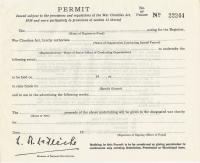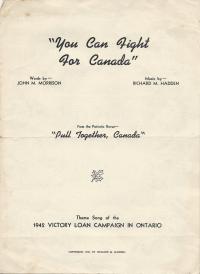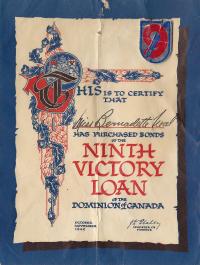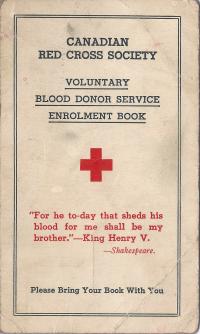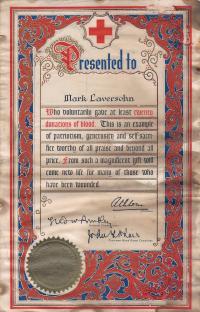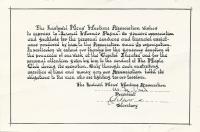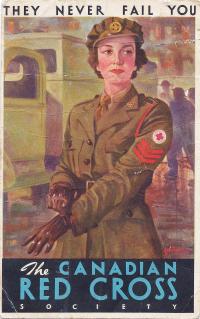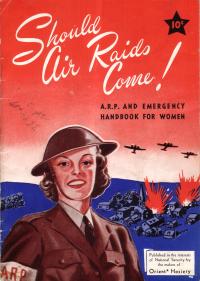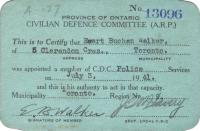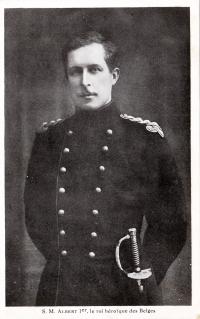Volunteering
Introductory Essay
Having a fund-raiser?
During the Second World War, the federal government took control of all fund-raising activities and the organizers of any event were required to secure the appropriate permission from the Department of National War Services.
"Pull Together, Canada"
Canada's second Victory Loan campaign ran in 1941 and to generate public interest, the Ontario Public Relations Committee mounted a splashy stage show, complete with its own theme song.
A Victory Loan donor
The Second World War ended in August 1945, but the 9th Victory Loan continued to attract support from Canadians in October and November.
Giving the gift of life
Donating blood was even more important in wartime than peacetime, because of the need for "emergency transfusions to those of His Majesty's Forces or civilians who are war casualties."
Twenty blood donations
During the Second World War, giving blood was a patriotic act, and twenty donations earned Mark Laversohn a special certificate.
Wartime work in Listowel
Founded in December 1941, the Listowel Wartime Men's Association was involved in a variety of charitable causes. In this case, it thanked a local businessman for donating to the war effort a week's receipts from the Capitol Theatre.
The need for blood
Thanks to advances in blood transfusion practice and technology during the First World War, blood could be stored and shipped more safely during the Second World War - and therefore there was a greater need for blood donors.
What to wear in an air raid
Reminding women that the enemy "has no consideration for the safety of civilians," this booklet (sponsored by Orient Beauti-Skin Hosiery) provided instruction on how to keep the family and home safe against enemy air attack - including advice on what to wear when dealing with bomb damage in the neighbourhood.
Civil defence in Toronto
Although Canada was in little danger of enemy air raids, there was a fully functional civil defence apparatus during the Second World War, with civilians deputized to perform various services in the event of an attack.
For Belgian refugees
In 1914, stories of Belgian civilians displaced by the German invasion spurred many Canadians to raise money for refugees. Albert, King of the Belgians, was a popular symbol in the fund-raising effort.

